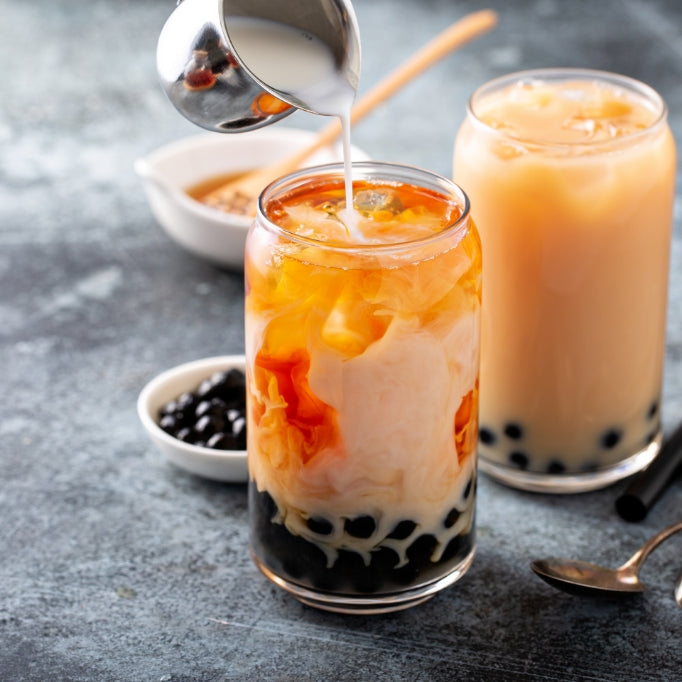Jasmine Tea 101 and Jasmine Tea Benefits

Of all the wonderful teas that come from China, jasmine tea is probably the tea most closely associated with that country. The delicate floral scent and aroma of jasmine tea, however, is not easily achieved. The process of creating a balanced jasmine tea is tedious and time-consuming and requires true expertise and impeccable timing. In order to fully understand jasmine tea benefits, we also need to understand all facets of this wonderful beverage, including its unique production process.
What Is Jasmine Tea?
The process of making jasmine tea is a time-consuming and delicate one and is part of what makes this tea so special.
The Tea Base
The best jasmine teas are made from leaves that have been encouraged to oxidize some and are close in type to green tea but are really a category all their own. This tea base is called pouchong or zao bei. The tea is harvested in the spring (generally April and May), but jasmine does not bloom until summer (July-September). The tea is processed using a slightly different drying process that involves blowing warm air on the surface of the leaves, which diminishes rolling and curving of the leaves and, in turn, means there is more surface area available for the leaves to absorb the jasmine scent later. The processed leaves are then carefully stored until the jasmine blooms a few months later.
Jasmine tea is most notably associated with China’s Fujian Province, specifically the area around the town of Fuan where jasmine bushes are found in abundance. Jasmine tea is produced in Chinese provinces, all during sweltering summers, but Harney & Sons believes the best comes from Fujian, which is where we source ours.
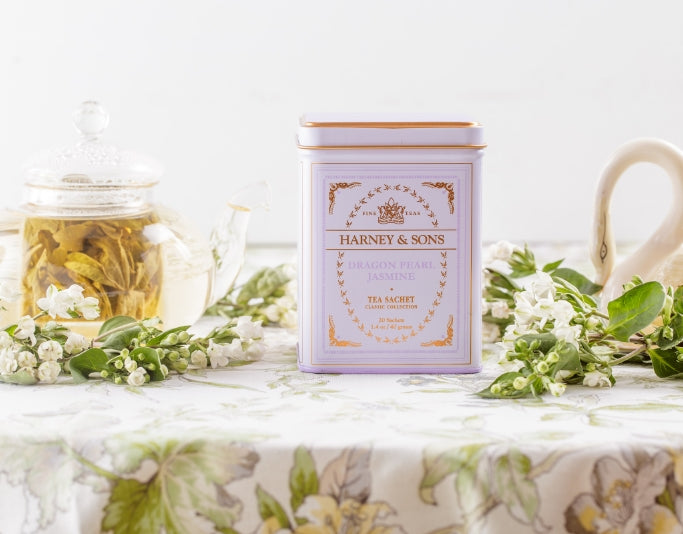
Combining the Tea Base With the Jasmine Flowers
When it’s time to harvest the jasmine flower buds, the best time to do so is in the early afternoon after the dew has evaporated. Maintaining the condition of the buds is critical; workers will keep the flowers at temperatures ranging from 100-104°F to encourage the buds to continue opening and to help the development of the flower’s aroma. Meanwhile, the base tea has been taken from its cool storage and has been allowed to come to room temperature, which in the Chinese provinces where jasmine grows is in the 90s during that time of year.
Production begins at night when the jasmine flowers and base tea are mixed together and raked into a pile, and left to mingle for about six hours. During that time, there is a buildup of heat in the pile that allows the jasmine buds to fully open and release their scent. The larger the pile, the hotter the internal temperature will become, requiring the tea makers to keep an eye on how hot it gets and adjust accordingly. If the base tea gets too hot, it will adversely affect the tea’s flavor.
This scenting process goes on for several days, with introductions of fresh jasmine blossoms into the pile every few hours after the old ones are sifted out. The first scenting period is the most vital, so large quantities of flowers are used during the first round, with decreasing amounts used in subsequent scenting sessions. The scent master determines how long and how many times a new batch of flowers is added. As the tea processes, it needs time to rest between scentings. As we said, it’s all a very exact and tedious process. Premium jasmine teas likeYin Haocan be scented as many as eight or nine separate times. With resting periods in between scenting periods, it can take as long as a month to finish a batch of Yin Hao.
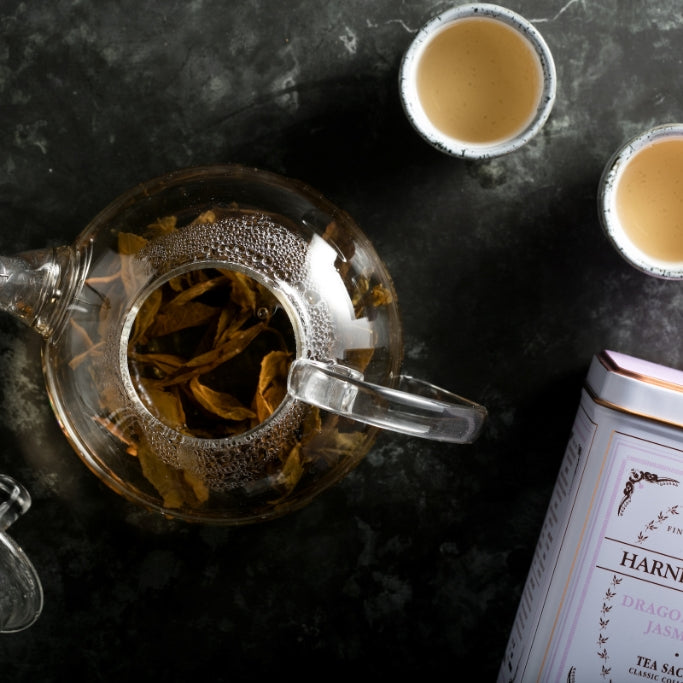
Finishing the Process
When it has been decided that the base tea has become jasmine tea, the blossoms are blown out of the tea with fans. While you may find some jasmine blossoms in teas here in the West, mostly for aesthetics as the flavoring is done through the scenting process, the Chinese prefer not to have blossoms in their jasmine tea, with just a few exceptions. From the time the tea leaves were harvested in the spring to late summer when the jasmine flowers are ready to be picked through the meticulous scenting process, a fresh batch of jasmine tea does not reach the market until October or November each year.
The process just described is used for premium jasmine teas, like the ones we’re proud to offer at Harney & Sons. Standard-grade jasmine tea goes through a similar scenting process, but uses summer-harvested tea leaves of a lesser grade and goes through only one or two scenting sessions. This grade of jasmine tea can also be made by simply combining jasmine blossoms with fully processed green or oolong teas. The result is a less richly scented tea that also does not have the extended shelf life of premium jasmine teas (up to three years due to the oxidation that occurs during the heat buildup in the scenting pile).

Is Jasmine Tea Green Tea?
As mentioned above, while the tea base used in jasmine tea is similar to green tea, jasmine tea is really its own unique category. The tea base most commonly used is pouchong, which is a darker tea than traditional green teas. And as we previously stated, some standard-grade jasmine teas are made from fully processed green or oolong teas.
To learn all about green teas, visit our Green Tea 101 page.
Does Jasmine Tea Have Caffeine?
Jasmine tea does have caffeine. Jasmine tea caffeine levels, when prepared the time-consuming way that we mentioned, will most closely approximate green tea levels of caffeine.
*While these caffeine levels hold true generally, caffeine in tea varies from plant to plant and within tea types.
To keep caffeine levels low, consider the following:
- Brew your tea properly with the correct amount of water, temperature and brew time.
- Use loose leaf tea. Teabags tend to contain smaller, cut leaves resulting in a faster caffeine extraction.
6 Jasmine Tea Benefits
Because jasmine tea is made from what is known as a “true tea” base – that is, it comes from either a green tea, oolong tea or sometimes even black or white tea base, all of which come from theCamellia sinensisplant, the mother plant of teas – jasmine tea benefits will be similar to many other teas. Here are six examples of what jasmine tea is good for.
An Energy Boost
Because jasmine tea is caffeinated, it will give you that little boost of energy that caffeine is known for. However, if you equate jasmine tea’s caffeine levels with that of green tea caffeine levels, you’ll only ingest about 35 MG of caffeine per cup versus about 95 MG with coffee. So if you enjoy the benefits of caffeine but would like to lower your intake, jasmine tea is a good choice.
Help for Your Immune System
When jasmine tea has a green tea base, the catechins found in green tea can help protect against the common cold and flu. Green tea catechins -- a substance that protects our cells from damage by free radicals -- consist of four antioxidant compounds. Catechins are a flavan-3-ol, which research recently published in Advances in Nutritionshow can have a true impact on your health. See our Two Cups of Tea a Day May Keep the Doctor Away blog for more information.
Improved Focus and Mental Clarity
In addition to giving you more energy, the jasmine tea benefits of caffeine also have the added effect of helping you focus, which increases your ability to be more attentive and alert. We can’t promise it will help you perform better on a test or complete that marketing report, but it might help you power through with more clarity!
Aches & Pains
Those antioxidants and anti-inflammatory properties we just referenced found in most teas, including jasmine teas, can help with temporary and chronic pain like arthritis and joint pain.
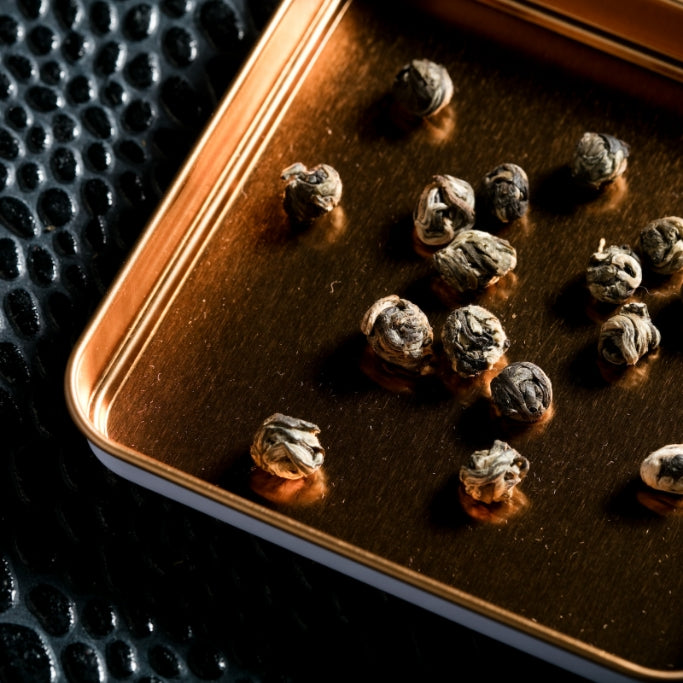
Improved Digestion
When your digestive system is happy, you’re generally a happier person! Once again, tea’s antioxidants and catechins come into play in helping calm your body, which can include your digestive system. Jasmine tea is a light, soothing beverage and can also play a role in helping you stay hydrated, which is important on almost every level.
De-stress and Relax
We know the act of simply making a pot or cuppa tea can help you slow down and relax. One jasmine tea benefit is its aroma, which can activate the olfactory system and trigger a response that releases chemicals that help the body relax and unwind. Speaking of chemistry: jasmine’s true tea base contains l-theanine, a compound widely present in tea that can help reduce anxiety and stress. And if you’re asking “does jasmine tea help you sleep,” because it contains caffeine we wouldn’t suggest it as a sleep aid, but enjoying its relaxing properties in the late afternoon may help you unwind from your day as you head toward bedtime.
Healthline’s “9 Reasons Why Jasmine Tea Is Good for You” explores some other possible jasmine tea benefits – just remember that more research is needed in some cases and to always consult your physician about any serious health issues.
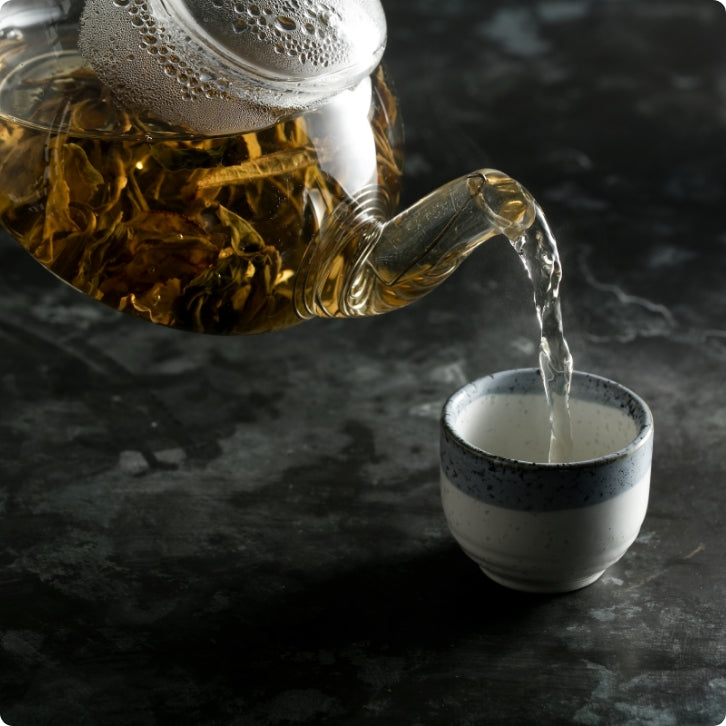
How to Make Jasmine Tea
- In your teapot, or filter, add 1 teaspoon of loose tea for each cup of tea you're brewing.
- Heat your water to 175° F and pour over the leaves.
- Pour fresh water over the tea or tea bag. This super-saturates the tea, allowing the perfect extraction of the flavor.
- Most jasmine teas steep for 3-5 minutes. Each batch and each drinker’s palate will dictate the proper brewing time. Observing both the tea liquor and body will help you gauge whether you have brewed your tea for the correct amount of time.
- Use a brew-in infuser in order to remove the tea leaves immediately, which eliminates any opportunity to accidentally over-steep. Pour the freshly brewed tea into your selected cup.
What Is the Best Jasmine Tea?
Harney & Sons offers several of the finest jasmine teas available. Peruse our entireJasmine Collection, which features the teas below and more.
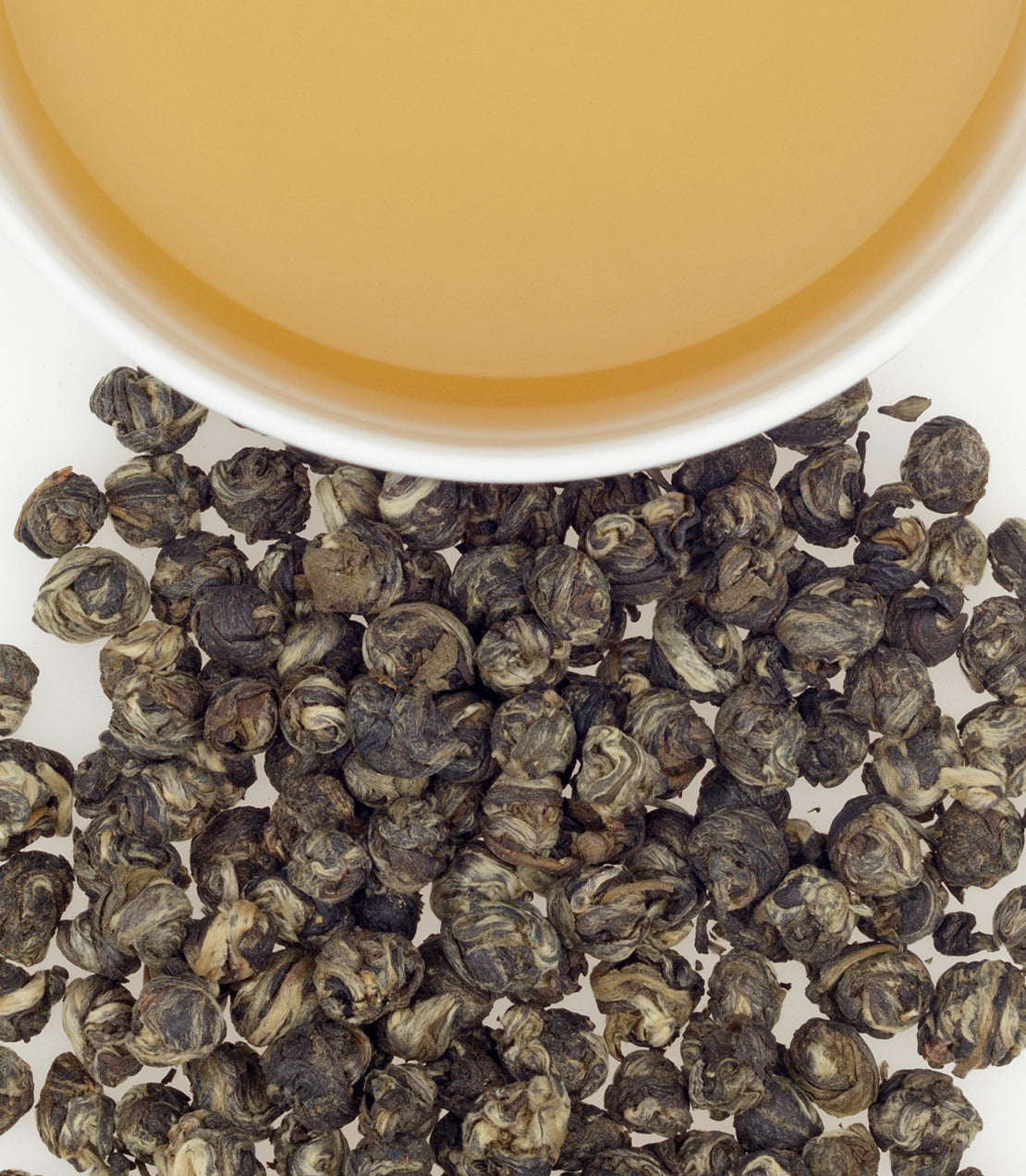
A masterpiece from Fuan, China, Dragon Pearl Jasmine is composed of little, hand-rolled 'pearls' gently infused with jasmine flowers. The blend is pure joy, with the floral and sweet aromas of the light-colored brew.

Sourced from Fujian Province in China, our black tea version of jasmine tea is hard to find. If we’re out of stock, just sign up for us to notify you when it’s back, and then act fast!
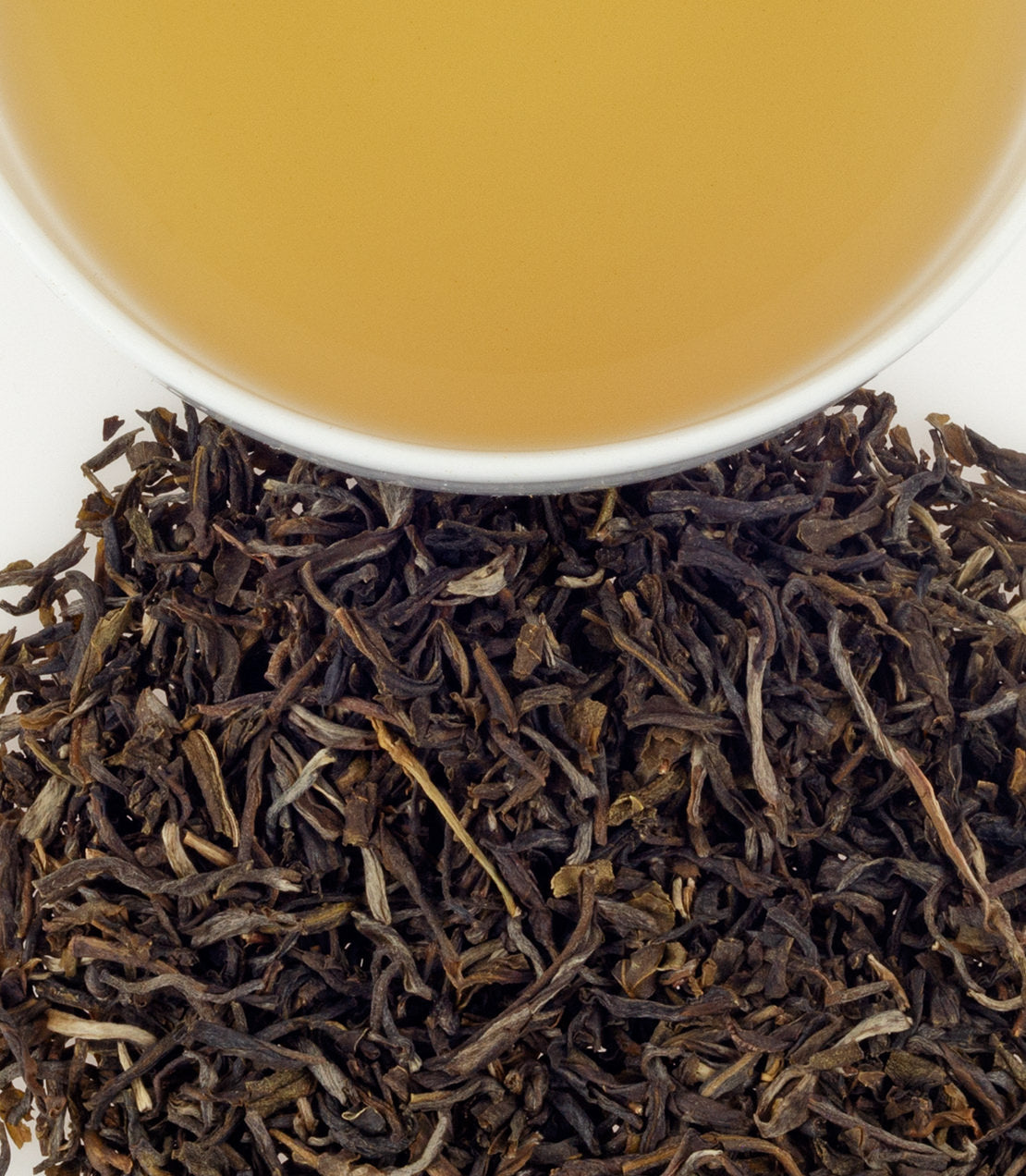
A medium-bodied tea with Earthiness from the aroma, with mellow fruit flavor, and floral notes brighten it.
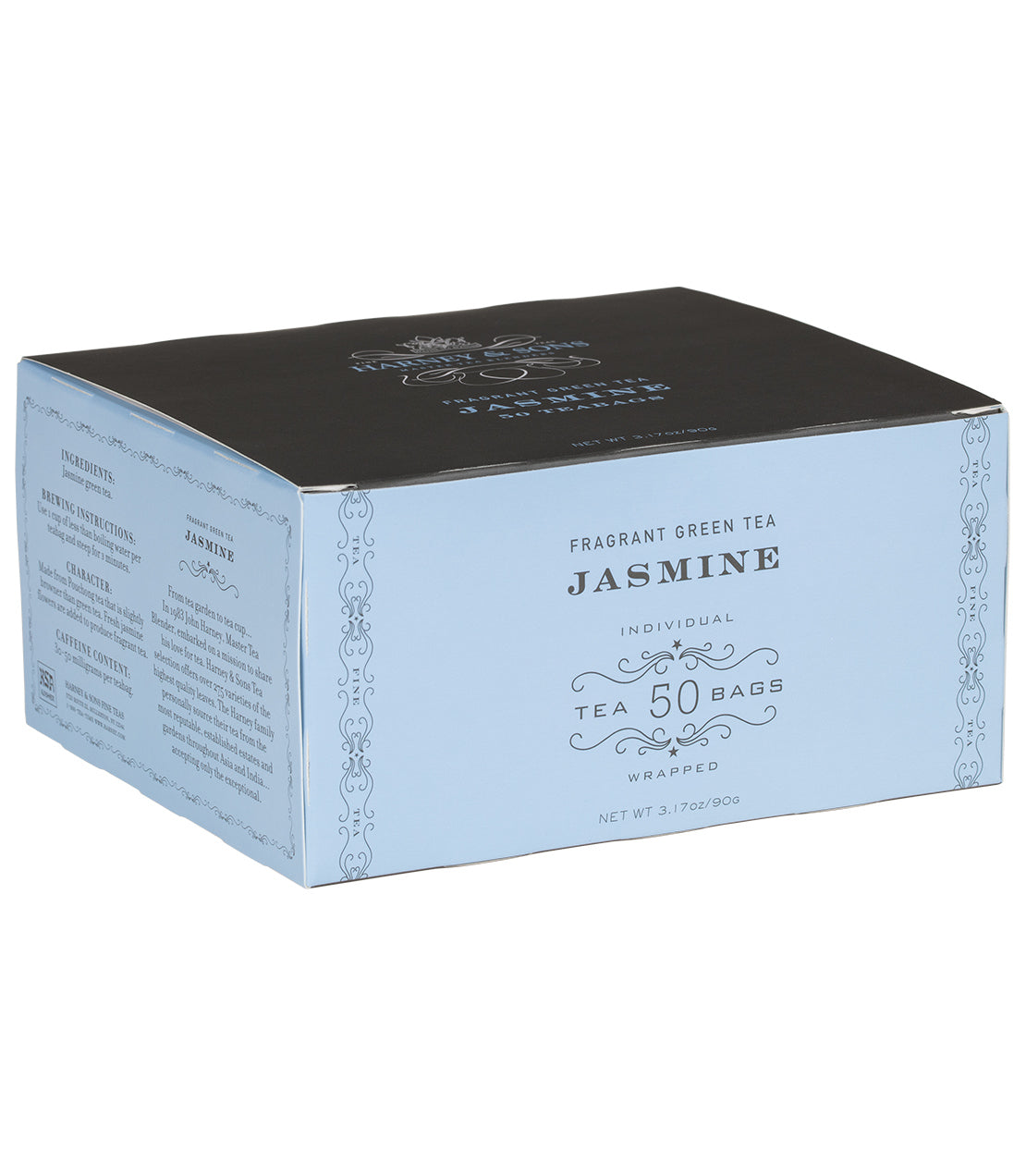
This classic jasmine tea has a pouchong tea base, which is slightly darker than a green tea.
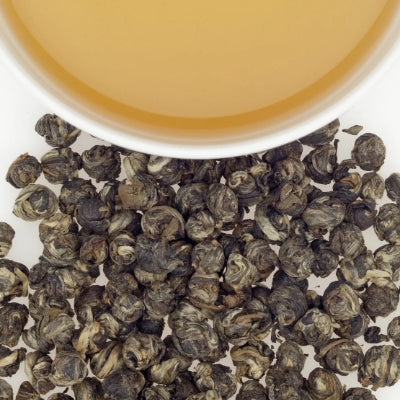
We discovered this select batch of very nice Dragon Pearl Jasmine, light-bodied with a sweet flavor like jasmine hard candies.
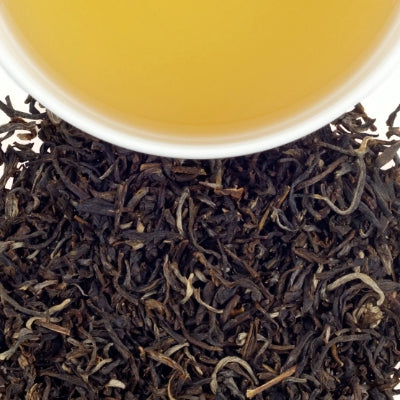
“Yin hao” means “silver tips” in Chinese, and this tea gets its name from the elegant curls of the green and white leaves.
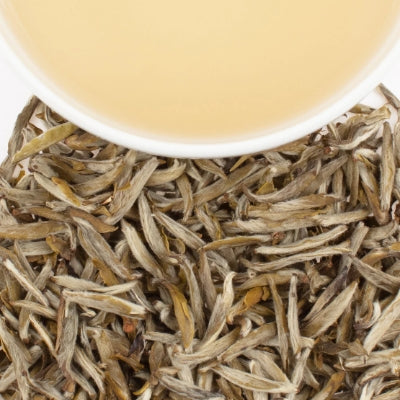
A unique take on the classic jasmine tea with a white tea silver needle base and a lovely, exceptionally light color.
Jasmine Tea Recipes
Just when you thought jasmine tea couldn’t get any better…one of the many benefits of jasmine tea is its versatility in baking and cooking. Enjoy these three popular recipes featuring jasmine tea.
We hope this deep dive into the wonderful world of jasmine teas, discovering how they are produced and what’s special about them, including jasmine tea benefits, has either further enlightened your enjoyment of jasmine teas or encouraged you to add jasmine tea to your shopping list. Either way, enjoy the floral wonders of jasmine tea!














